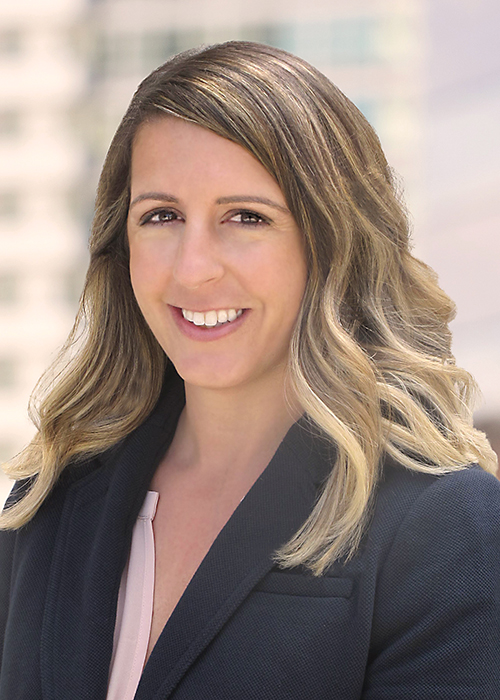Navigating gaps between faulty
workmanship and contractors professional liability
By Natalie Sherod, CPCU, CRM, CIC
Faulty workmanship and contractors professional liability (CPrL) exposures continue to challenge construction firms and insurance advisors alike. Understanding how these two distinct coverages complement commercial general liability (CGL) is key to closing critical gaps in protection.
CGL policies exclude damage resulting from professional services, such as design decisions or construction management. As delivery models like design-build and design-assist become more common, and as contractors take on coordination roles, these professional exposures are growing—often unnoticed. This is where faulty workmanship and CPrL coverage can help address risks and fill gaps. But note that these two solutions play two distinct roles.
Faulty workmanship. This insurance coverage is a relatively new and evolving solution, and is offered by a growing number of carriers. It typically responds to claims alleging defective labor or materials in a contractor’s self-performed work. Importantly, this coverage fills the gap left by the “your work” exclusion in a standard CGL form.
Key characteristics include:
- Coverage for the cost to repair or replace defective work performed by the insured
- Applicability to self-performed work—not the work of sub-
contractors - Limits typically ranging from $250,000 to $5 million
- Exclusion of bodily injury/property damage (which is left to the CGL) and professional services (which is covered under CPrL)
This type of coverage is especially valuable for artisan and trade contractors—electricians, plumbers, HVAC firms, flooring installers, and others who self-perform a majority of their work and are exposed to rework costs.
Contractors professional liability. This coverage, on the other hand, covers negligent acts, errors, or omissions in professional services provided by or on behalf of the contractor. This might include design recommendations, subcontractor management, construction sequencing, or engineering delegated to the contractor under the contract.
CPrL policies typically feature:
- Claims-made triggers
- Defense and indemnity for third-party financial damages
- Applicability to services like design-assist, value engineering, and site coordination
- Options to include rectification expense or protective indemnity
While many CPrL forms carve out coverage for faulty work, some include exceptions when the defect results from a professional service—such as failure to supervise subs or review submittals. Still, most exclude the cost to repair the contractor’s own faulty work unless specifically endorsed.
Real-world claim scenarios
To illustrate the difference between these coverages, consider the following:
- Faulty workmanship claim. A drywall subcontractor installs the wrong gauge drywall throughout a hospital wing. The mistake is discovered late in the project, requiring full removal and replacement. The CGL denies coverage due to the “your work” exclusion. A faulty workmanship policy steps in to cover reinstallation costs.
- Professional liability claim. A general contractor suggests an alternative foundation layout to save costs during a design-assist project. The design proves inadequate, leading to settlement and project delays. The owner sues for financial damages. CGL and faulty workmanship do not apply—but CPrL covers legal defense and settlement.
- Mixed exposure. An electrical contractor installs undersized conduit in a commercial building. The city inspector fails the job, requiring full removal and delay costs. If the decision was based on design delegation or code interpretation, CPrL may apply. If the mistake was purely executional, faulty workmanship would respond—if purchased.
In a world of complex construction risk,
relying solely on a CGL policy is a gamble.
Where they intersect—and why both matter
Although distinct, CPrL and faulty workmanship often work together to provide complete protection. Faulty workmanship addresses defective physical work; CPrL addresses flawed decision-making tied to professional services. Neither replaces the other—and neither is a substitute for general liability.
In some markets, carriers offer combined policies or endorsements that package professional, pollution, and faulty workmanship coverage together. These are especially useful for contractors with diversified responsibilities, including self-performed labor and design oversight.
Guidance for brokers
Brokers can bring significant value by helping their construction clients understand their true risk profile and match it to appropriate insurance solutions. Key steps include:
- Evaluate delivery model. Are they design-build? Do they participate in design-assist or delegated design?
- Assess self-performed work. How much work is performed by the contractor vs. subs?
- Review contracts. Look for professional liability insurance requirements, indemnity obligations, and performance warranties.
- Ask about claims history. Have they had rework claims or been sued over design issues?
- Coordinate coverage. Ensure umbrella policies align with both CPrL and faulty workmanship, where possible.
Conclusion
In a world of complex construction risk, relying solely on a CGL policy is a gamble. Faulty workmanship coverage and contractors professional liability address fundamentally different exposures—but both serve the same goal: keeping contractors out of costly, uninsured scenarios.
For insurance professionals, helping clients secure both coverages isn’t just about checking boxes. It’s about ensuring survival in an increasingly litigious, quality-driven construction environment—and positioning your agency as a risk management partner, not just a policy provider.
The author
Natalie Sherod is a commercial insurance broker at Cavignac, with nearly 20 years of industry experience. Prior to transitioning to the brokerage side, she spent more than a decade as a commercial underwriter, giving her a distinct advantage when navigating complex risk placements and advocating for her clients. Natalie specializes in structuring tailored insurance solutions for construction, real estate, and middle-market businesses, with a deep focus on liability exposures, contract compliance, and emerging coverage gaps.






